2025 Electricity Rates by State
For residents and businesses alike, the cost of electricity is a regular monthly expense. But electric rates vary from state to state depending on supply, demand, and available plans. Geographical factors and climate also play a role.
Some states are high energy consumers, often related to long seasons of hot or cold weather, which drives up overall electricity use averages. The U.S. Energy Information Administration (EIA) publishes annual electricity rankings, including consumption and cost per kilowatt-hour (kWh).
When moving and finding a place to call “home,” electricity costs can be a major consideration for families. How does Texas compare to other U.S. states? Do the energy-rich resources of the Lone Star State impact costs? What about its warm climate? Read on for answers to these questions to see how Texas ranks on electricity rates and usage.
Average Residential Electricity Rates by State
(cents per kWh for the latest month available)
The residential electricity rates listed below are shown in cents per kilowatt-hour (kWh), a measurement that indicates the amount of energy used that is equal to consuming 1000 watts per hour. On average, U.S. residents consume around 887 kWh per month, which is then multiplied by the rate to determine overall electricity cost. Along with the current rates, the table also provides rates for the previous year and the percentage of increase or decrease of the rate change.
In the table below, you can compare the average electricity rates by state to determine the monthly cost residents pay. As reflected in the numbers, higher rates per kWh often result in higher monthly costs.
| State | Average Electric Rate: August 2025 |
Average Electric Rate: August 2024 |
% Change | $ Monthly Electric Cost |
|---|---|---|---|---|
| Alabama | 16.19 | 14.95 | 7.7% | $145.22 |
| Alaska | 27.71 | 26.44 | 4.6% | $248.56 |
| Arizona | 15.21 | 14.81 | 2.6% | $136.43 |
| Arkansas | 13.26 | 12.51 | 5.7% | $118.94 |
| California | 31.58 | 31.22 | 1.1% | $283.27 |
| Colorado | 16.48 | 15.43 | 6.4% | $147.83 |
| Connecticut | 30.29 | 29.96 | 1.1% | $271.70 |
| District of Columbia | 23.19 | 17.4 | 25.0% | $208.01 |
| Delaware | 16.81 | 15.79 | 6.1% | $150.79 |
| Florida | 15.39 | 13.6 | 11.6% | $138.05 |
| Georgia | 15.54 | 14.83 | 4.6% | $139.39 |
| Hawaii | 38.9 | 42.26 | -8.6% | $348.93 |
| Idaho | 12.07 | 12.04 | 0.2% | $108.27 |
| Illinois | 18.09 | 15.62 | 13.7% | $162.27 |
| Indiana | 16.59 | 14.79 | 10.8% | $148.81 |
| Iowa | 15.64 | 14.78 | 5.5% | $140.29 |
| Kansas | 14.73 | 14.43 | 2.0% | $132.13 |
| Kentucky | 13.4 | 12.66 | 5.5% | $120.20 |
| Louisiana | 12.46 | 11.68 | 6.3% | $111.77 |
| Maine | 28.25 | 23.77 | 15.9% | $253.40 |
| Maryland | 19.87 | 17.83 | 10.3% | $178.23 |
| Massachusetts | 30.63 | 29.56 | 3.5% | $274.75 |
| Michigan | 20.74 | 19.77 | 4.7% | $186.04 |
| Minnesota | 16.94 | 16.45 | 2.9% | $151.95 |
| Mississippi | 13.49 | 12.91 | 4.3% | $121.01 |
| Missouri | 15.37 | 14.72 | 4.2% | $137.87 |
| Montana | 14.3 | 13.28 | 7.1% | $128.27 |
| Nebraska | 13.19 | 12.29 | 6.8% | $118.31 |
| Nevada | 12.57 | 13.72 | -9.1% | $112.75 |
| New Hampshire | 24.47 | 22.93 | 6.3% | $219.50 |
| New Jersey | 24.96 | 20.63 | 17.3% | $223.89 |
| New Mexico | 16.27 | 14.91 | 8.4% | $145.94 |
| New York | 26.65 | 25.2 | 5.4% | $239.05 |
| North Carolina | 14.56 | 13.91 | 4.5% | $130.60 |
| North Dakota | 12.94 | 12.73 | 1.6% | $116.07 |
| Ohio | 17.61 | 15.73 | 10.7% | $157.96 |
| Oklahoma | 14.31 | 12.74 | 11.0% | $128.36 |
| Oregon | 15.74 | 14.95 | 5.0% | $141.19 |
| Pennsylvania | 19.94 | 17.57 | 11.9% | $178.86 |
| Rhode Island | 26.52 | 26.83 | -1.2% | $237.88 |
| South Carolina | 14.89 | 14.31 | 3.9% | $133.56 |
| South Dakota | 13.98 | 13.64 | 2.4% | $125.40 |
| Tennessee | 13.16 | 12.25 | 6.9% | $118.05 |
| Texas | 15.45 | 14.88 | 3.7% | $138.59 |
| Utah | 13.7 | 13.02 | 5.0% | $122.89 |
| Vermont | 22.57 | 21.26 | 5.8% | $202.45 |
| Virginia | 16.01 | 14.17 | 11.5% | $143.61 |
| Washington | 13.66 | 12.16 | 11.0% | $122.53 |
| West Virginia | 15.65 | 15.41 | 1.5% | $140.38 |
| Wisconsin | 18.57 | 17.57 | 5.4% | $166.57 |
| Wyoming | 14.37 | 13.77 | 4.2% | $128.90 |
Top 10 Residential Electricity Rates by State
(cents per kWh for the latest month available)
As indicated by the dark blue hues on the interactive map, the states with the highest residential electricity rates are mainly concentrated within the country's more isolated or highly populated areas. Often, infrastructure costs more per resident to power less-populated areas, and the denser areas have more demand for more infrastructure. The summer and winter months may see the average electricity rates of these states rise within certain portions of the country based on geographical location; however, major shifts within the top ten could be influenced by other factors. Results for other forms of energy used by residents, like natural gas and fuel costs, do not always correlate with electricity rates and therefore affect states differently.
| State | Average Electric Rate: August 2025 |
Average Electric Rate: August 2024 |
% Change | $ Monthly Electric Cost |
|---|---|---|---|---|
| Hawaii | 38.9 | 42.26 | -8.6% | $348.93 |
| California | 31.58 | 31.22 | 1.1% | $283.27 |
| Massachusetts | 30.63 | 29.56 | 3.5% | $274.75 |
| Connecticut | 30.29 | 29.96 | 1.1% | $271.70 |
| Maine | 28.25 | 23.77 | 15.9% | $253.40 |
| Alaska | 27.71 | 26.44 | 4.6% | $248.56 |
| New York | 26.65 | 25.2 | 5.4% | $239.05 |
| Rhode Island | 26.52 | 26.83 | -1.2% | $237.88 |
| New Jersey | 24.96 | 20.63 | 17.3% | $223.89 |
| New Hampshire | 24.47 | 22.93 | 6.3% | $219.50 |
Lowest 10 Residential Electricity Rates by State
(cents per kWh for the latest month available)
The ideal place for states (and electricity consumers!) is within the bottom rankings for cost, where the monthly rates typically remain below the national average. Aside from geography, other factors that play a role in a state's electricity costs include regulations, generation sources (fossil vs. renewable), and the variety of plans and incentives offered to consumers.
| State | Average Electric Rate: August 2025 |
Average Electric Rate: August 2024 |
% Change | $ Monthly Electric Cost |
|---|---|---|---|---|
| Washington | 13.66 | 12.16 | 11.0% | $122.53 |
| Mississippi | 13.49 | 12.91 | 4.3% | $121.01 |
| Kentucky | 13.4 | 12.66 | 5.5% | $120.20 |
| Arkansas | 13.26 | 12.51 | 5.7% | $118.94 |
| Nebraska | 13.19 | 12.29 | 6.8% | $118.31 |
| Tennessee | 13.16 | 12.25 | 6.9% | $118.05 |
| North Dakota | 12.94 | 12.73 | 1.6% | $116.07 |
| Nevada | 12.57 | 13.72 | -9.1% | $112.75 |
| Louisiana | 12.46 | 11.68 | 6.3% | $111.77 |
| Idaho | 12.07 | 12.04 | 0.2% | $108.27 |
Variability of Electricity Rates by State
Over time, state electricity rates may be subject to changes that cause them to move up and down within rankings. Some trends remain the same, even with these movements, with the most remote or densely populated areas often the costliest.
Other influences on cost include weather conditions, as areas with severe heat or cold are susceptible to energy-use spikes based on how residents to counteract the climate. Often that can mean tapping into a home's heating and cooling capabilities, which presents the greatest energy cost for homes nationwide. Other chart averages can be impacted by statewide rate adjustments, which can be particularly sensitive to the swings that often occur.
How Texas Compares
According to the EIA chart, Texas residents are right in the middle of the pack. At an average price of 15.45 per kWh, Texas ranks 22nd in terms of average price per kWh. While that might not seem impressive, it is when you consider that Texas is a high energy consumption state. The hot climate and population size play a big role in consumption and power demand, yet we pay less than other Southern states like Alabama and Florida.
Numerous factors influence energy costs, and knowing how your state stacks up is helpful when deciding where to put down roots. Payless Power, a Texas company created for Texans, offers affordable prepaid electricity plans across most of the state. Customers get reasonable rates and can save even more by controlling their energy consumption with our pay-as-you-go plans. Enter your zip code to find a plan for your household.
What our customers are saying
See why our power customers say we're the best electricity provider in Texas!
I was worried about getting electricity for my home through a prepaid company. I was calling around to see different rates then going through all the hassle of credit checks while dropping points each…
I have been with this company for several years and have been very happy since. Even when I moved, they made my usually stressful situation very easy and carefree. I recommend them to everyone that I…
I have enjoyed the service for 2 years now. In the beginning this service was planned to be temporary but with the service being so effective for me i decided to keep it for the long haul. I’m a happy customer.



